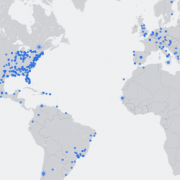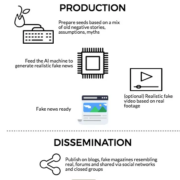Top engagement drivers: how to get viral on Facebook
#Facebook Page Insights, among other things, help to identify what is the most engaging content for your audience. Some content gets viral, while other doesn’t get noticed at all.
Every content is a meme: some memes survive, going viral or being the source of new memes, while other doesn’t get noticed at all and disappear.
In this sense, #social media are not only a memetic machine, with their constant production or reproduction of memes, but also a memetic cemetery (despite some memes of the past can always come back to life, under any circumstance).
This analysis is neither exhaustive nor definitive but tries to offer an overview over factors that affect the viral reach of Facebook posts, either on pages or profiles.
Results are summarised in the above scheme that is the outcome of frequent observations through different Facebook pages.
Why do we post?
The scheme starts from publisher’s intentions, either posting as an individual or for an organisation/brand.
Drivers of our publishing activity could be divided into three main, groups:
- Individualism – it tells how we feel or how we want to represent ourselves to the world (or, at least, our audience)
- Altruism – it is probably the most valuable content because it is aimed at creating/sharing value with the audience
- Opinion – this can be the outcome of either an individual attitude or a wish to start/join a conversation and affect the public opinion
Most of what we post contains elements of any of the above factors.
Content focus: individual vs. general
While Individualism can be categorised as material embedding a personal element and focusing on the poster (e.g. a selfie), the other two categories (Altruism and Opinion) relate to the external environment (e.g. tech, politics, sport, arts, science, culture in general, etc.).
Unless talking about VIP’s (including social stars, even in very narrow fields) or well-known brands that despite talking about themselves have a strong influence on the external environment, general content has more chances to get viral than the individual.
Engagement factors
The expected consequent actions (reactions) made by our audience, will increase the reach of our content: this is the viral effect, an enormous benefit because it does not cost anything, differently than promoted posts. Quality has value.
To get a high viral reach, it is important to engage people that are social stars, since their actions on your posts usually are more effective regarding reach, but, in general, every little helps.
- Individualist content might be shared because of Empathy
- Altruist content can be multiplied when it is perceived as Useful
- Opinions tend to encourage Participation (either with a positive or negative feedback)
The actions that we expect from this #engagement are likes for an individualist content, share for a useful altruist content and comment for an opinion that drives participation.
How to categorise Facebook posts: some examples
We can try to attribute each content we see on Facebook to one of the following three categories and imagine what can be the expected reaction.
- Individualism: selfies, feelings, travel, self-made content, etc.
- Altruism: pets, recipes, reviews, guides, invitations, etc.
- Opinion: politics, violence, VIPs, activism, etc.
Some content stays in between two or even all three categories. For example, a video clip of a song can be posted to represent a personal feeling (individualism) and at the same time to help other people discover that particular content (altruism) and express an opinion that reflects the lyrics (opinion).
Support for a political leader/movement or complaints towards a brand/company’s customer services can be categorised as opinions and can have a follow up made of supporting (or detracting) comments – and relative comment-likes and comment-tags.
A selfie is an individualist content, while an #how-to #guide is (or, at least, try to be) an act of altruism that hopefully is perceived as useful and then multiplied by being liked and shared.
Affinity to your average audience increases engagement
Everyone has a different personality and Facebook knows that. Thinking of Lookalike audiences, we have to post with our audience in mind, more than content.
Knowing our audience enables to build an ideal average that should be our main content driver. The affinity of our content to our audience’s expectations is a core virality factor.
A Facebook Page with a very generic audience tends to have fewer occasions to gets its content viral due to high engagement-rate, while as opposite, content posted on a Page whose audience is very narrow and specialised can get viral with a high engagement-rate.
All factors count
Often many pages publish great content too generic and informative: its engagement-rate (and consequently its organic reach) will be very low.
Some content is too cold (for example a link to a technical guide) or too personal (for example a personal status about facts of little interest for the audience) or too introvert (something that nobody or very few people can understand or care of).
To get viral on Facebook, content need to be a mix of all factors proposed in the scheme [ individualism + altruism + opinion ] paying attention to audience’s closeness (including language and jargon) and possibly enriching text with hashtags if the content is about places, brands or trending topics.
Write your content (make it original), try to disseminate value – a strong factor, usually appreciated by your audience – and don’t forget to express your point of view because Facebook is a conversational platform after all.
Something missing: the dark side of analytics
Not all content is shared publicly. Therefore, its virality cannot be adequately measured. Often, good content is also multiplied by private messages (e.g. Facebook, Whatsapp, etc.), channels that cannot be tracked but still can increase reach, engagement, leads, conversions.
In fact, many of us are not willing to publicly share or comment anything, but it doesn’t mean that we are not interested in debating about with our best friend through private messages. We are not aware of what happen behind the wall unless we don’t start to track and read everyone’s private messages, but such amazing advanced tools apparently are available only to very few organisations/governments..
So don’t stick to what’s measurable, ignoring the dark side of analytics. What’s behind a “direct” source can be the outcome of your #social media marketing efforts.
The infographic is made mainly for Facebook, but can be useful also for content marketing in general and other social media platforms, in particular, Google+ and Twitter.
Feel free to download and share Facebook Engagement Factors (PDF)






